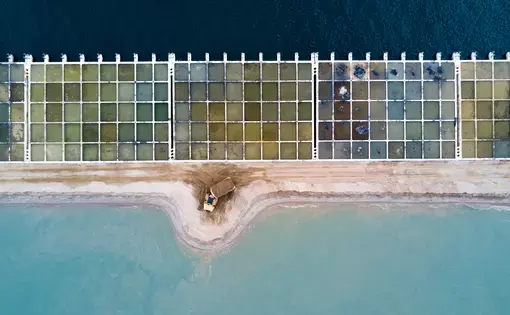
On Monday, August 8, 2016, Pulitzer Center grantee Vince Beiser appeared on NPR's The Diane Rehm Show to discuss a growing, worldwide environmental problem: sand mining. Quartz beach sand is a crucial ingredient in concrete, glass, and computer chips. With the world's urban population at 4 billion and rising, Beiser explained, those commodities are needed more than ever.
"Riverbeds are stripped bare, beaches are being stripped bare," he told Rehm. "There's a lot of environmental and human damage that's being caused by this incredible demand for sand."
In articles for Wired and The New York Times, Beiser has covered activists in the developing world who are working to prevent further damage to their coastlines. These campaigns have a counterpart in Marina, California, where environmentalists are on the brink of shutting down America's last coastal sand mine. But these activists have enjoyed several advantages that those in the developing world lack.
For decades, Ed Thornton, professor of Oceanography at the Naval Postgraduate School, has watched sand mining eat away at shorelines in California's Monterey Bay, which was a center of sand mining in the late 19th and 20th Centuries.
But now, only the Lapis Lustre Sand Mine–the last coastal sand mine in the United States–remains. It's a large, oval-shaped pond separated by the ocean by a narrow berm. At high tide, ocean waves crash over the barrier, bringing in sand. A dredging boat scoops the sand off the bottom for cleaning and shipment.
Aerial photos of the mine show no obvious problems. But after studying how erosion has unfolded in Monterey Bay since the 1850s, Thornton has pinned down the mine as the main cause of the receding shoreline near Marina.
"It's taking sand out of the system," he told the Pulitzer Center in an interview. "My estimates on this are that over eight acres of land, coastal land, is lost every year. And the cumulative net effect since 1965...when this mine started, is [that] over 400 acres of land have been lost."
Thornton has calculated that, without the mine, the shoreline would grow, not recede. Since 2009, he's been working with a coalition of local environmental groups that is now pressuring the California Coastal Commission to shut down the Lapis mine, owned by the Mexican company Cemex. In recent years, Thornton's goal has been to convince the Coastal Commission to apply its regulatory authority to the mine.
Over the course of 2016, he and area environmentalists have closed in on this goal, thanks in large part to coverage by local journalists. On January 14 of this year, David Schmalz detailed the campaign in a long-form article for Monterey County Weekly. According to Thornton, that article spurred other media outlets to cover the issue, and led residents to voice their concerns about the mine at state agencies' public meetings.
He explained in an email that, on August 11, "approximately 50 people packed the CA Coastal Commission meeting in Santa Cruz to show support for a cease and desist of Cemex sand mining with 12 speakers giving public comment. [At the] next meeting in closed session, Commissioners will hear the progress of the negotiations with Cemex."
By the end of September, Thornton expects that the Coastal Commission could come out with its own report on the issue that would allow a cease-and-desist action to proceed against the mine.
Speaking over the phone from California, Thornton seemed confident that this measure could put an end to the mining. State regulators could fine Cemex "up to $11,000 per day." If, after five years, the company refused to stop mining, "there's some big consequence. But that would be two million dollars later." A concerted effort of concerned citizens, committed journalists, and strong regulatory agencies may well shutter the last coastal sand mine in the United States.
India, meanwhile, still lacks the same amount of regulatory muscle. According to one former legislator Beiser spoke with, "70 percent of the sand miners have no permits." Traveling to one of these illegal mines with Sumaira Abdulali, India's foremost campaigner against illegal sand mining, he watched police officers stand by as trucks loaded with sand rumbled away. At thousands of sites like these, "sand mafias" operate illegally, with little regard for the judiciary or the police. Those who stand in their way risk deadly retribution.
Changing this situation may require changing the expectations of India's sand customers. The Lapis Lustre mine, which competes with highly-regulated inland and riverbed mines in the United States, sells sand between $20 and $30 per ton. At the end of 2015, meanwhile, India's government reported that fine sand cost 820 rupees per metric ton, or about $7.74 per ton. For India's government to effectively enforce its environmental regulations, the country's builders and glassmakers will need to accept a price that better reflects sand mining's environmental costs.
Beiser sees this as the true challenge facing environmentalists in one of the world's largest, fastest-growing economies. "At root, it's an issue of supply and demand," he wrote in Wired. "The supply of sand that can be mined sustainably is finite. But the demand for it is not."







